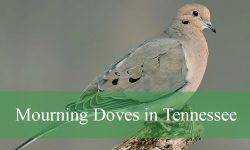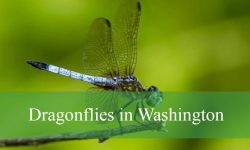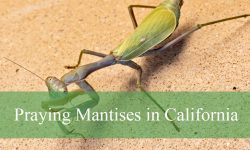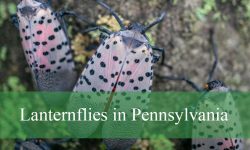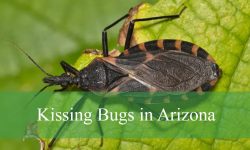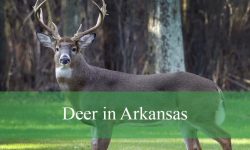Kansas, located in the heart of the United States, is home to a diverse range of wildlife, including several species of skunks. These nocturnal mammals play a crucial role in the ecosystem by controlling insect and rodent populations. Skunks are often recognized for their distinctive black-and-white coloration and their potent defensive spray, but each species has unique traits that help with identification. In Kansas, three primary skunk species are commonly encountered: the Striped Skunk, the Eastern Spotted Skunk, and the Western Spotted Skunk. Understanding their characteristics, habits, and habitats can help residents and wildlife enthusiasts identify and coexist with these fascinating creatures.
Skunks are most active at night, and their elusive nature often makes them challenging to observe. While their spray is a famous defense mechanism, these animals generally prefer to avoid confrontations and will only use it as a last resort. Observing skunks in their natural environment can provide insights into their feeding patterns, social behaviors, and seasonal activities. For Kansas, knowing which skunk species are present can also aid in wildlife management and conservation efforts.
This guide delves into the identification, behavior, and ecology of the three skunk species in Kansas. Detailed descriptions and a comparison table are provided to help differentiate them and understand their roles in the ecosystem.
Striped Skunk (Mephitis mephitis)
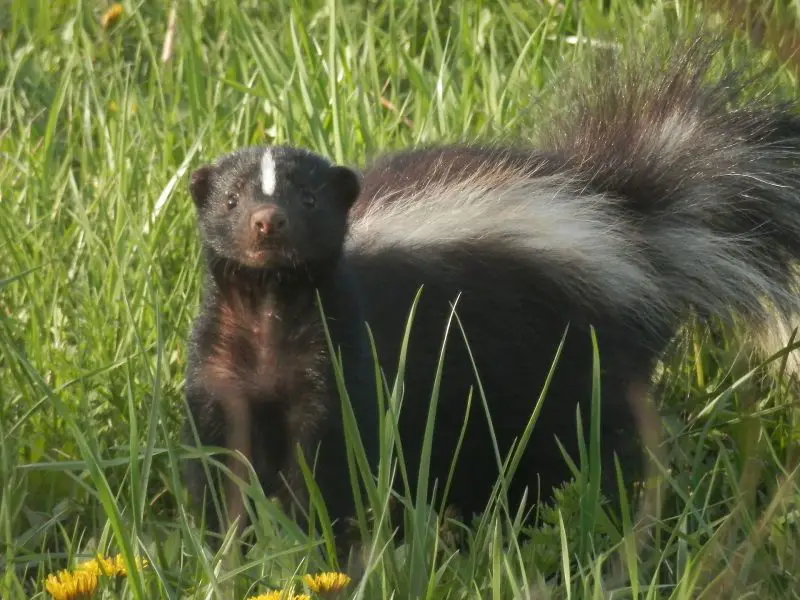
The Striped Skunk is the most familiar and widespread skunk species in Kansas. Its iconic black coat with two broad white stripes running from the head to the tail makes it easy to identify. Adult striped skunks typically measure between 20 to 31 inches in length, including a bushy tail that contributes significantly to their overall size. They weigh between 4 to 10 pounds, with males generally being larger than females. The white stripes on their back can vary slightly in pattern, with some individuals displaying a single stripe or broken stripes, but the contrast against the black fur is always distinct.
Behaviorally, striped skunks are primarily nocturnal and solitary, except during the breeding season. They are omnivorous, feeding on insects, small mammals, fruits, and vegetation. During the warmer months, they hunt actively at night, often in suburban areas where food sources such as pet food or garbage are accessible. When threatened, they exhibit a characteristic warning stance by raising their tails and stomping their feet before releasing their strong-smelling spray.
The Striped Skunk prefers open areas and is adaptable to different habitats, including grasslands, farmlands, and urban environments. In Kansas, they are commonly found near fields, pastures, and residential backyards. During winter, they den in burrows or under structures, entering a period of torpor to conserve energy. Their ability to thrive in diverse habitats makes them the most frequently encountered skunk species in the state.
Eastern Spotted Skunk (Spilogale putorius)

The Eastern Spotted Skunk is smaller and more agile than the striped skunk, measuring approximately 14 to 20 inches in length with a tail that adds an additional 5 to 8 inches. They weigh between 1.5 to 3 pounds, making them considerably lighter than striped skunks. Their fur is black with irregular white spots and broken stripes along the back and sides, giving them a “dashed” or “spotted” appearance rather than the continuous stripes seen on striped skunks. Their slender body and long legs make them excellent climbers and allow them to navigate rocky or brushy terrain with ease.
Eastern Spotted Skunks are primarily nocturnal and exhibit a unique defensive behavior known as hand-standing. When threatened, they perform a handstand, lifting their front paws while arching their back and tail to signal a warning before spraying. This species is omnivorous, consuming insects, small mammals, berries, and seeds. They are more adept at hunting for insects and small rodents than striped skunks, often foraging in burrows or under logs.
These skunks prefer wooded areas, brushy fields, and the edges of forests, although they can sometimes be found near farms. In Kansas, their populations are less common and more localized compared to striped skunks. Eastern Spotted Skunks typically use abandoned burrows or rock crevices for shelter, particularly during colder months. Their agility and smaller size allow them to exploit habitats that are less accessible to larger skunk species, giving them a niche advantage in specific environments.
Western Spotted Skunk (Spilogale gracilis)
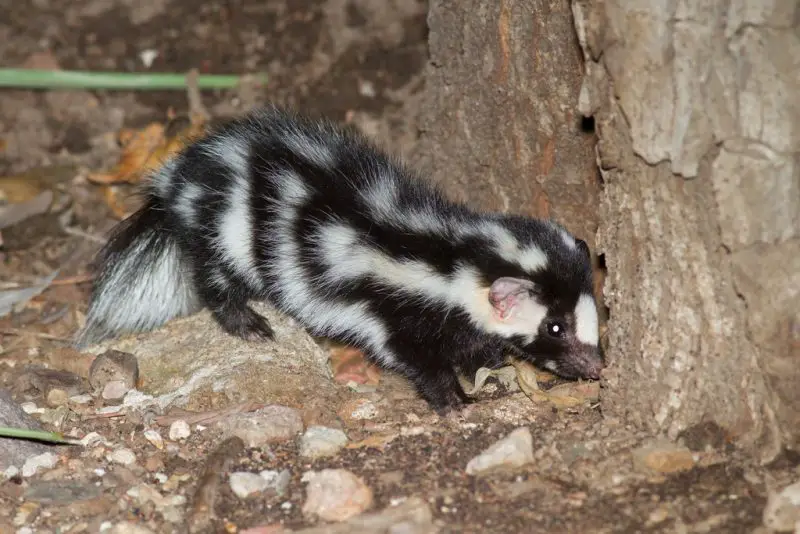
The Western Spotted Skunk is very similar in size and behavior to the Eastern Spotted Skunk, with lengths ranging from 14 to 20 inches and tail lengths of 5 to 8 inches. Adults weigh between 1.5 to 3.5 pounds. Their fur pattern consists of black with white patches and broken stripes, though the markings often differ slightly from their eastern counterparts. The white patterns are typically more pronounced on the face, neck, and tail, creating a striking contrast against the dark body. Their slender build and long limbs make them highly mobile and skilled climbers.
Like the Eastern Spotted Skunk, the Western Spotted Skunk is nocturnal and exhibits the hand-stand threat display before spraying. Their diet is similarly varied, focusing on insects, small mammals, fruits, and seeds. They are particularly effective at controlling insect populations due to their climbing ability, which allows them to reach nests and burrows inaccessible to larger skunks.
Western Spotted Skunks inhabit open woodlands, grasslands, and rocky areas. In Kansas, they are generally found in the western and central regions of the state, where their preferred habitats include shrublands, canyons, and areas with abundant ground cover. They make dens in rock crevices, hollow logs, or burrows, depending on local terrain. Seasonal movements are minimal, but they become less active during winter months, seeking shelter to conserve energy.
Comparison of Skunk Species in Kansas
The three skunk species in Kansas—Striped Skunk, Eastern Spotted Skunk, and Western Spotted Skunk—can be distinguished based on size, fur pattern, behavior, and habitat preferences. While all are nocturnal and capable of spraying as a defense, their physical characteristics and ecological niches vary significantly.
Feature |
Striped Skunk (Mephitis mephitis) |
Eastern Spotted Skunk (Spilogale putorius) |
Western Spotted Skunk (Spilogale gracilis) |
|---|---|---|---|
Length |
20–31 inches |
14–20 inches |
14–20 inches |
Weight |
4–10 lbs |
1.5–3 lbs |
1.5–3.5 lbs |
Fur Pattern |
Two broad white stripes |
Black with white spots and broken stripes |
Black with white patches and broken stripes |
Tail |
Bushy, black with white tip |
Slender, moderately bushy |
Slender, moderately bushy |
Behavior |
Nocturnal, solitary, ground forager |
Nocturnal, hand-stand threat, agile climber |
Nocturnal, hand-stand threat, skilled climber |
Habitat |
Open fields, farmlands, urban areas |
Wooded edges, brushy fields, localized areas |
Open woodlands, shrublands, rocky areas |
Defense |
Spray when threatened |
Hand-stand display, then spray |
Hand-stand display, then spray |
Identifying Skunks in Kansas
Recognizing skunk species in the wild requires careful observation of size, fur pattern, and behavior. Striped skunks are immediately noticeable due to their bold stripes and larger body size. In contrast, spotted skunks require closer observation because their broken stripe or spotted patterns can be subtle. Watching their behavior at night, particularly defensive actions like hand-standing, can help confirm identification.
Observing skunks from a safe distance is essential. Using red-filtered lights during nighttime observation can reduce disturbance, as skunks are sensitive to bright lights. Photographs of their fur patterns, tail shape, and body size provide reliable identification, especially for spotted skunks, where individual markings vary widely. Understanding their preferred habitats also increases the likelihood of correct species identification.
Behavior and Feeding Habits
All three skunk species in Kansas are opportunistic omnivores, meaning they adapt their diet to available food sources. Striped skunks frequently forage in open fields and suburban areas, consuming insects, small mammals, eggs, fruits, and even human leftovers. Eastern and Western Spotted Skunks focus more on insect predation and small rodents, often using their agility to access burrows and nests.
Mating season typically occurs in late winter to early spring. Males may roam extensively in search of females, while females prepare dens for rearing young. Litters usually consist of 4 to 6 kits, which remain in the den for several weeks before emerging under maternal supervision. Social interactions are minimal outside mating, as skunks are largely solitary, and territorial disputes are generally settled through displays rather than physical conflict.
Habitat and Range in Kansas
Striped Skunks are widespread across Kansas, inhabiting grasslands, farmland, suburban neighborhoods, and even urban parks. Their adaptability allows them to thrive in human-altered environments. Eastern Spotted Skunks are rarer, often confined to brushy fields, wooded edges, and areas with dense ground cover in the eastern parts of the state. Western Spotted Skunks are more common in the western and central regions, favoring rocky areas, open woodlands, and shrublands.
Seasonal activity patterns vary slightly among species. All skunks reduce activity during winter but do not enter true hibernation. Instead, they enter torpor, a state of lowered metabolism, to conserve energy during cold months. Dens are often reused across seasons, with locations selected for protection from predators and environmental extremes.
Conservation and Human Interaction
Skunks are beneficial to Kansas ecosystems because they help control insect and rodent populations. However, conflicts can arise when skunks forage in yards, gardens, or under structures. Understanding skunk behavior and habitats can minimize negative encounters. For instance, securing garbage bins, removing food sources, and sealing access to potential dens can prevent skunks from taking residence near homes.
Conservation efforts focus on habitat protection, monitoring populations, and reducing unnecessary human-caused mortality. While striped skunks are abundant, spotted skunks are less common and may require more careful management to ensure their populations remain stable. Public education on skunk ecology, safe observation practices, and coexistence strategies helps maintain a balance between human activity and wildlife conservation.
Fun Facts About Skunks in Kansas
Skunks are fascinating creatures beyond their notorious spray. The Striped Skunk’s bold white stripes make it Kansas’ most recognizable species. Spotted skunks, though smaller, display incredible agility, even performing hand-stand displays to warn predators. Skunks are beneficial to local ecosystems, controlling insect and rodent populations. Despite their smell, they generally avoid humans and can coexist peacefully if given space. Observing them at night with minimal disturbance offers a rare glimpse into their secretive world. Skunks also have excellent memories and can recognize familiar food sources, paths, and safe dens, which helps them thrive even near urban areas.
Eastern and Western Spotted Skunks may be rare, but they are efficient hunters and climbers, capable of reaching insect nests or small burrows inaccessible to other animals. During winter, all skunks enter a torpor state rather than full hibernation, conserving energy while remaining ready to forage on warmer nights. Their nocturnal behavior, distinct fur patterns, and unique defensive strategies make skunks one of Kansas’ most intriguing mammals.
Conclusion
Kansas hosts three distinctive skunk species, each contributing uniquely to local ecosystems. The Striped Skunk is the most common and recognizable, thriving in various habitats across the state. Eastern Spotted Skunks are smaller, agile, and elusive, inhabiting wooded edges and brushy fields. Western Spotted Skunks share similarities with their eastern counterparts but prefer western and central regions with rocky or open woodlands.
Identifying these species requires attention to size, fur pattern, behavior, and habitat preferences. Understanding their feeding habits, defensive behaviors, and ecological roles allows residents and wildlife enthusiasts to appreciate skunks beyond their notorious reputation. By respecting their space and conserving natural habitats, Kansans can continue to coexist with these nocturnal mammals that play an essential role in maintaining ecological balance.
FAQs About Skunks in Kansas
What are the main types of skunks in Kansas?
Kansas is home to three primary skunk species: the Striped Skunk (Mephitis mephitis), the Eastern Spotted Skunk (Spilogale putorius), and the Western Spotted Skunk (Spilogale gracilis). Each species has distinct physical characteristics, behaviors, and habitat preferences that help differentiate them.
How can I identify a striped skunk?
Striped Skunks are larger than spotted skunks, with a body length of 20–31 inches and a weight of 4–10 pounds. They have a black coat with two prominent white stripes running from the head to the tail. Their bushy tail, nocturnal habits, and tendency to forage in open fields and suburban areas make them easily recognizable.
How are spotted skunks different from striped skunks?
Spotted skunks are smaller, weighing between 1.5–3.5 pounds and measuring 14–20 inches in length. Their black fur features white spots or broken stripes instead of continuous stripes. Spotted skunks also exhibit a unique hand-stand defensive display before spraying, and they are more agile climbers compared to striped skunks.
Where do skunks live in Kansas?
Striped Skunks are widespread and adapt well to grasslands, farmlands, and urban environments. Eastern Spotted Skunks are more localized, preferring wooded edges and brushy fields. Western Spotted Skunks are commonly found in western and central Kansas, inhabiting open woodlands, shrublands, and rocky areas.
Are skunks dangerous to humans?
Skunks are generally not aggressive and prefer to avoid humans. Their primary defense is a strong-smelling spray, which they use only when threatened. Skunks may carry diseases like rabies, so it is important to observe them from a safe distance and avoid direct contact.
What do skunks eat in Kansas?
All three skunk species are omnivores. They feed on insects, small mammals, eggs, fruits, seeds, and occasionally human food scraps. Striped skunks tend to forage on the ground, while spotted skunks often hunt insects and small rodents in burrows or brushy areas.
When are skunks most active?
Skunks are nocturnal, meaning they are most active at night. They generally forage after sunset and return to their dens before dawn. Seasonal activity decreases during winter months, when skunks enter a state of torpor to conserve energy.
How can I safely coexist with skunks near my home?
To reduce conflicts, avoid leaving food outdoors, secure trash bins, and seal any potential denning sites under decks or sheds. Observing skunks from a distance and using red-filtered lights at night can allow safe viewing without disturbing them.
Can I differentiate Eastern and Western Spotted Skunks?
Yes. Although both species are similar in size and pattern, the Western Spotted Skunk is typically found in western and central Kansas, while the Eastern Spotted Skunk resides in the eastern part of the state. Facial and tail markings may also slightly differ, with Western Spotted Skunks often having more pronounced white patches.
Do skunks hibernate in winter?
Skunks do not enter true hibernation. Instead, they go into torpor, a period of reduced metabolic activity, to conserve energy. They may remain in their dens for several days during extremely cold weather but can become active on milder nights.

